
Hello, my IGN is CullTheMeek. I’m known in the community as a competitive player and streamer. I’ve been in the competitive scene for just about a year. Most of this time was spent in Gankstars as a member of Sirius. In the past couple months, I moved to the team Alliance, which was soon after acquired by Team Solo Mid. (TSM)
This is my second guide, and I’m planning to make this one much more in-depth than my first. In the prehistoric times of Blind Pick, I was known quite well for my Glaive play. Here, I’ll be sharing a great deal of my knowledge of the hero.

|
|
Hunt the Weak
Slot: Heroic Perk
Glaive's critical strikes cleave in a 4-meter cone in front of him.
- Cleave deals half damage to minions.
|
This passive may not seem like it provides much, but with the proper positioning you can cleave multiple enemies for huge chunks of damage. The keyword is positioning. This passive really shines against triple melee compositions, or double melee carry compositions. This is because they are often clumped up on top of each other focusing the same target. Against ranged carries, it’s a bit more difficult to line up successful cleaves, but it’s still very possible. If two enemies are close to each other, even if it’s a support and a carry, you should try to position yourself so the support is in cleave radius of the carry.
This passive doesn’t define glaive’s kit, but it fits into it very well. Glaive’s kit is largely based around critical strikes and high scaling with weapon power, and with the proper build, this passive can melt entire teams if they dare stand in this cleave radius.
|
|
Afterburn
Slot: A
Glaive rockets in the target direction, damaging all enemies along the way. His next basic attack is replaced by a frightening blast that knocks his target back 5.5 meters and briefly stuns them. |
There are so many things that I can and will say about this ability later in the guide, but for now I’ll just go over a few things. This ability is so extremely versatile in it’s uses. It’s good for initiating, escaping, chasing, disengaging, and.. it does a hell of a lot of damage. This is an ability that can change the course of the entire game if used in the correct way and with the right timing. Pushing an enemy out of position can be so devastating. In fact, almost half of this guide will be about this ability, because it is what makes Glaive such a threat in all points in the game.
Using this ability is not something that can be learned right away. In fact, it’s one of the most difficult abilities in the game to use to it’s maximum potential. It’s an ability you have to get a feel for, but I promise once you start to get the hang of it, you’ll be impressed with how impactful it can be.
|
|
Twisted Stroke
Slot: B
Instantly executes a critical strike.
- This ability deals weapon damage, but it can deal bonus crystal damage if you have any crystal power.
- Triggers basic-attack effects.
- Passive: Increases critical-strike chance and AOE-cleave damage of basic attacks.
|
This ability is very.. basic. Actually, it’s a basic attack. The important things about this ability are that it has a much larger range than glaive’s auto attacks, and it is always a critical strike. There are very few heroes that are granted a critical strike whenever they want. Ringo is granted a critical strike whenever he kills an unit or hero, but glaive can use this whenever he wants. As Glaive’s passive states, your critical strikes will cleave in a radius in front of you. This ability goes along with his passive very nicely because it is a guaranteed critical strike.
Besides the guaranteed critical strike, this ability also grants Glaive passive critical strike chance. This is something unique to Glaive. It helps him scale into the late game after his early and mid game dominance. You won’t get many critical strikes until you start putting a few points into this ability, but when you overdrive it, it gives 25% crit chance. This is more than a tornado trigger gives! Crit chance is a stat that scales very well with weapon power and attack speed, and of course, more crit chance! That’s why you want to at least build a couple tier 3 offensive items, to make the most of the scaling.
|
|
Bloodsong
Slot: C
Swings Glaive's axe in a 5.4-meter circle, dealing massive area damage that increases with the number of Bloodsong stacks used. This removes all stacks.
- Passive: Glaive generates Bloodsong stacks from basic attacking or from receiving basic attacks (max 20 stacks).
- Each stack grants Glaive bonus lifesteal.
|
This ability was victim to some very impactful nerfs because of the immense area of effect damage and survivability it provided through the lifesteal. Nowadays, it’s still a good chunk of damage that can’t be overlooked. It also has quite a high range, and provides a great deal of lifesteal. At level 3 of this ultimate, it gives 20% lifesteal! (Barbed needle and Serpent mask only give 10% lifesteal)
Managing your Bloodsong stacks is very important to glaive. A Bloodsong stack is gained when you basic attack anything (Twisted stroke counts!), or when you’re basic attacked by an enemy hero. Ideally, when you know there will be a fight you should go into it with 20 stacks. It’s not something that will lose you the team fight if you don’t, but it will give you a big advantage if you do.
I’ve already mentioned that you gain increased lifesteal per stack, but the other reason it’s important to manage your stacks is because the damage of the ability is based on the amount of stacks you have upon activation. Don’t hesitate to use the activation of this ability when you’re in the middle of the enemy team or you need to finish off a fleeing target, but just remember you will lose your lifesteal until you’re able to gain stacks again.


|
 |
|
SPEED|LIFESTEAL|BLEED |
|
|
 Fortress pairs extremely well with Glaive. They have an incredible amount of synergy together in terms of their abilities and methods of outputting damage. Usually, Glaive has to use his Fortress pairs extremely well with Glaive. They have an incredible amount of synergy together in terms of their abilities and methods of outputting damage. Usually, Glaive has to use his
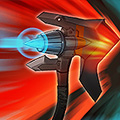 Afterburn or a boots activation to reach a target, however with the speed boost from Fortress' Afterburn or a boots activation to reach a target, however with the speed boost from Fortress'
 Truth of the Tooth, this is less of a problem. Truth of the Tooth also provides Glaive with even more lifesteal! Fortress' second ability, Truth of the Tooth, this is less of a problem. Truth of the Tooth also provides Glaive with even more lifesteal! Fortress' second ability,
 Law of the Claw, goes very well with glaive as well. Law of the Claw, goes very well with glaive as well.
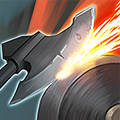 Twisted Stroke counts as a basic attack, and along with the attack speed you'll be building, bleed stacks will accumulate very quickly! Twisted Stroke counts as a basic attack, and along with the attack speed you'll be building, bleed stacks will accumulate very quickly! |
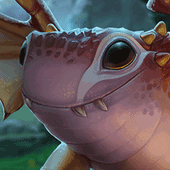
|
 |
|
PEEL AND CARRY |
|
|
 Skaarf is a hero that needs to keep his distance so he can safely deal damage. With the right peal, Skaarf quickly becomes a terror in teamfights once he stacks his Skaarf is a hero that needs to keep his distance so he can safely deal damage. With the right peal, Skaarf quickly becomes a terror in teamfights once he stacks his
 Broken Myth. Glaive is very helpful to Skaarf because Broken Myth. Glaive is very helpful to Skaarf because
 Afterburn can be used to knock away targets that attempt to stick to Skaarf and kill him before he stacks his BM. Also, once a target is on fire and Skaarf needs to Afterburn can be used to knock away targets that attempt to stick to Skaarf and kill him before he stacks his BM. Also, once a target is on fire and Skaarf needs to
 Fan the Flames, an Afterburn can give Skaarf the last couple basic attacks he needs to max out the damage output. Fan the Flames, an Afterburn can give Skaarf the last couple basic attacks he needs to max out the damage output. |


|
|
Tension Bow
This is an item of preference for me. Many glaive players instead go for a quick
 Sorrowblade instead of opting for one of these. The reason I like this item, is because Twisted stroke can proc it, as it is counted as a basic attack. A guaranteed critical strike and a tension bow proc, at a 4 meter range, is very scary. Also, since the knockback from Sorrowblade instead of opting for one of these. The reason I like this item, is because Twisted stroke can proc it, as it is counted as a basic attack. A guaranteed critical strike and a tension bow proc, at a 4 meter range, is very scary. Also, since the knockback from
 Afterburn is a basic attack, Tension bow can be proc'd easily this way as well. The armor pierce from this item also scales very nicely throughout the game. I highly recommend picking up a tension bow on Glaive. Afterburn is a basic attack, Tension bow can be proc'd easily this way as well. The armor pierce from this item also scales very nicely throughout the game. I highly recommend picking up a tension bow on Glaive. |

|
|
Travel Boots
Glaive kind of wants to be everywhere on the map at once.
 Travel Boots help us rotate faster from our jungle to their's, as well as to lane and to important objectives. The passive speed boost when out of combat allows for easier positioning for Travel Boots help us rotate faster from our jungle to their's, as well as to lane and to important objectives. The passive speed boost when out of combat allows for easier positioning for
 Afterburns, and it's needless to mention the more frequent sprint activations. If you're ahead and you feel that you can make the investment, pick these up early. Afterburns, and it's needless to mention the more frequent sprint activations. If you're ahead and you feel that you can make the investment, pick these up early. |

|
|
Fountain Of Renewal
In 1.16, Fountain received a very impactful nerf. I'm not a big fan of it since this update, but if you want to support your team a little bit and you need some shield, it can be a decent item to build. |

|
|
Atlas Pauldron
Against any carries that depend on autoattacks, (
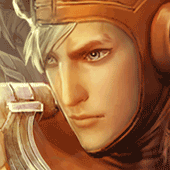 Vox, Vox,
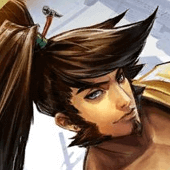 Ringo, Ringo,
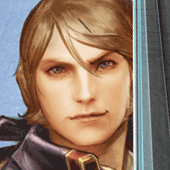 Blackfeather, Blackfeather,
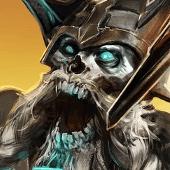 Krul) Atlas is a must for glaive. Glaive has an extremely easy time getting in range to use Atlas because of his Afterburn. Also in general, it's just an extremely strong item and I recommend it 100%. Krul) Atlas is a must for glaive. Glaive has an extremely easy time getting in range to use Atlas because of his Afterburn. Also in general, it's just an extremely strong item and I recommend it 100%. |

|
|
Sorrowblade
Finishing your heavy steel into a
 Sorrowblade is actually very situational. In most cases, you will want to build a lot of tankiness instead. ( Sorrowblade is actually very situational. In most cases, you will want to build a lot of tankiness instead. (
 Atlas Pauldron, Atlas Pauldron,
 Fountain of Renewal, Fountain of Renewal,
 Aegis) However, in the late game Glaive needs more than a Aegis) However, in the late game Glaive needs more than a
 Tension Bow to be able to be a factor in teamfights. Eventually you'll need this, but be careful not to get it until you have enough defense. Tension Bow to be able to be a factor in teamfights. Eventually you'll need this, but be careful not to get it until you have enough defense. |


|
|
Tornado Trigger / Bonesaw
On glaive, you're going to have a
 Blazing Salvo throughout the game. Eventually, you'll have to decide what to upgrade it into. If the enemy team doesn't seem too worried about your damage and has not bothered to build armor, it's completely okay to opt for a tornado trigger. However, if the enemy does choose to build armor then even with the combination of Blazing Salvo throughout the game. Eventually, you'll have to decide what to upgrade it into. If the enemy team doesn't seem too worried about your damage and has not bothered to build armor, it's completely okay to opt for a tornado trigger. However, if the enemy does choose to build armor then even with the combination of
 Tornado Trigger, Tornado Trigger,
 Tension Bow, and Tension Bow, and
 Sorrowblade, you won't be doing much damage. However with Sorrowblade, you won't be doing much damage. However with
 Bonesaw, armor will be much less of a problem. It's important to note, that like sorrowblade, you do not want to build these offensive tier 3 items until you have the defense to support it, or you're just really ahead in gold. Bonesaw, armor will be much less of a problem. It's important to note, that like sorrowblade, you do not want to build these offensive tier 3 items until you have the defense to support it, or you're just really ahead in gold. |

|
|
Aegis
Aegis is a very reliable item choice against cp laners such as Skaarf, Vox, and Celeste. It's especially good when the enemy team has debuffs or any crowd control that you want to be able to block. One problem is that it's a selfish item. By this I mean, it's not helping your team. Jungle Glaive usually does not have enough gold to carry the game in the later stages so building pure tankiness for himself over an atlas pauldron or a fountain of renewal usually isn't ideal. |

Early Game
The early game is the most important part of the game for Glaive. This is when he sets up for his mid game powerspike with a tension bow a utility item. (
 Fountain of Renewal
Fountain of Renewal, or
 Atlas Pauldron
Atlas Pauldron) To get to this point, make sure you are getting all of your farm in jungle. However, do not be afraid to roam up to lane to try to pull of a kill. A few well executed ganks can get your laner very ahead, which will allow them to carry Glaive through the late game when he starts to fall off a bit.
Mid Game
If Glaive was able to farm well in the early game, this is when he really makes his impact. With just a
 Tension Bow
Tension Bow, glaive is able to deal out insane amounts of burst damage. Roam with your team and attempt to catch enemies by surprise or out of position. With just one
 Afterburn
Afterburn, you can secure a very full gold mine or pick off an enemy to set up for a turret an easy turret push.
Late Game
Now that it's reached the late game, and your enemies have probably built up a good amount of defense, Glaive won't be able to burst enemies down nearly as well. Instead, focus on the utility that your afterburn provides to displace targets and set up your lane carry to be able to stay safe while dishing out damage in teamfights. The other big job that Glaive has is applying Atlas on to the enemy carries. If you do these two things correctly in teamfights, your lane carry should be set up to carry the game!


Afterburn has a few very obvious ways to be used, and a few that people don’t usually think of. It has a lot of ins and outs. We’ll start my familiarizing ourself with what exactly happens when you afterburn. Based on where you tap, you will be rocketed in that target direction. While you are traveling, and enemies that you move through will take CP damage. Your next basic attack will knock the target enemy back a very significant distance, as well as stun them for a very short time after they have finished being knocked back.
We’ll start with the most obvious use.
Initiating a team fight with Afterburn
This is how most people think to use Afterburn, by simply walking up to an enemy and then after burning behind them and knocking them towards your team. This can be a very effective way to use afterburn but it’s also quite risky. Usually when the enemy team sees a giant Glaive in front of them, they’re cautious about getting in afterburn range. An experienced opponent will not typically let you within range to be knocked directly backwards. The reason it’s risky is because if the enemy has a reflex block, they can simply block the knock back and then you are overextended and prone to being focused down and kited by their team. Check the items of your enemies often to know if they have a Reflex Block or not.
If Glaive does manage to knock a key target back into his team to start a fight, the fight will most always go in his favor. To guarantee you’ll be able to afterburn them back, use bushes to hide your presence and then when the enemy walks too close, knock them out of position. Be cautious, it’s not a good idea to knock an enemy into your team that wants to be in the middle of your team.
Another obvious way to get into range of your enemy is by having a boots activation. The important thing to remember with this is to not go too far from your team to knock an enemy back. Your team may end up being too far without you realizing.
One of the most important about initiating with afterburn is making sure your team is ready for it. Afterburn requires a lot of coordination between Glaive and his team. Use pings to tell your team you are going to initiate, so they can follow up effectively to the knock back.
Disengaging
This is a less obvious way to use Afterburn. When the enemy team attempts to engage a fight, and it’s not looking good for Glaive and his team, he may use his afterburn to knock an enemy away from his team.
You usually want to knock away the enemy whom is closest to your other carry, or who is the biggest threat. After burn is one of, if not the most effective ability in the game for disengaging. If you successfully knock an enemy away, and your supports uses warhorn, it’s almost impossible for the enemy to pursue.
In the process of disengaging and knocking an enemy away, you may find that you are provided with a short window to focus down an enemy carry because the knocked back enemy is too far away to help them. Being able to recognize this opportunity is a skill that comes with time. This is also a part of another use of Afterburn, but we’ll get to that later.
There’s not many things to be careful about when disengaging, just make sure to knock the enemy directly away from your team, or at an angle that makes enough distance that they can’t catch up to you after they are knocked back.
Peeling for your team
Glaive is one of the tankiest heroes in the game due to his extremely high base health. Because of this, the enemy will most likely be trying to focus down another carry on your team that’s not as tanky. Pealing should not be confused with disengaging, because they have different intentions behind their uses.
Peeling in short means, keeping the enemy carries off of your allied carry to keep them safe. It’s best to wait until the enemy hero has already used their gap closers to knock them away, or else they can use said gap closer to jump on your allied carry again. Don’t wait too long though, you want to keep your friends alive.








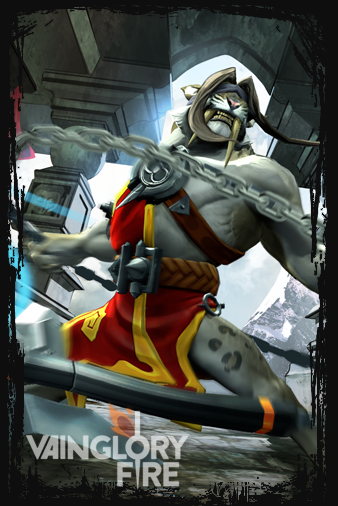









Quick Comment (19) View Comments
You need to log in before commenting.